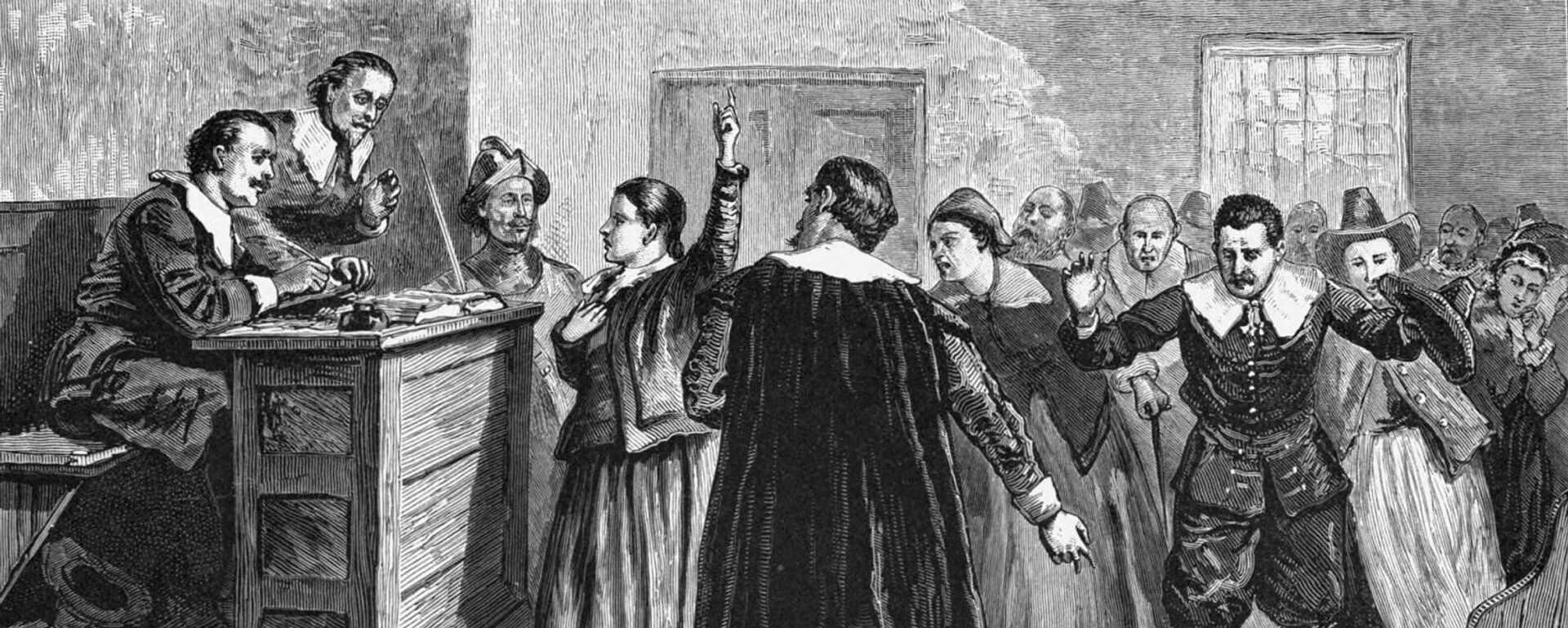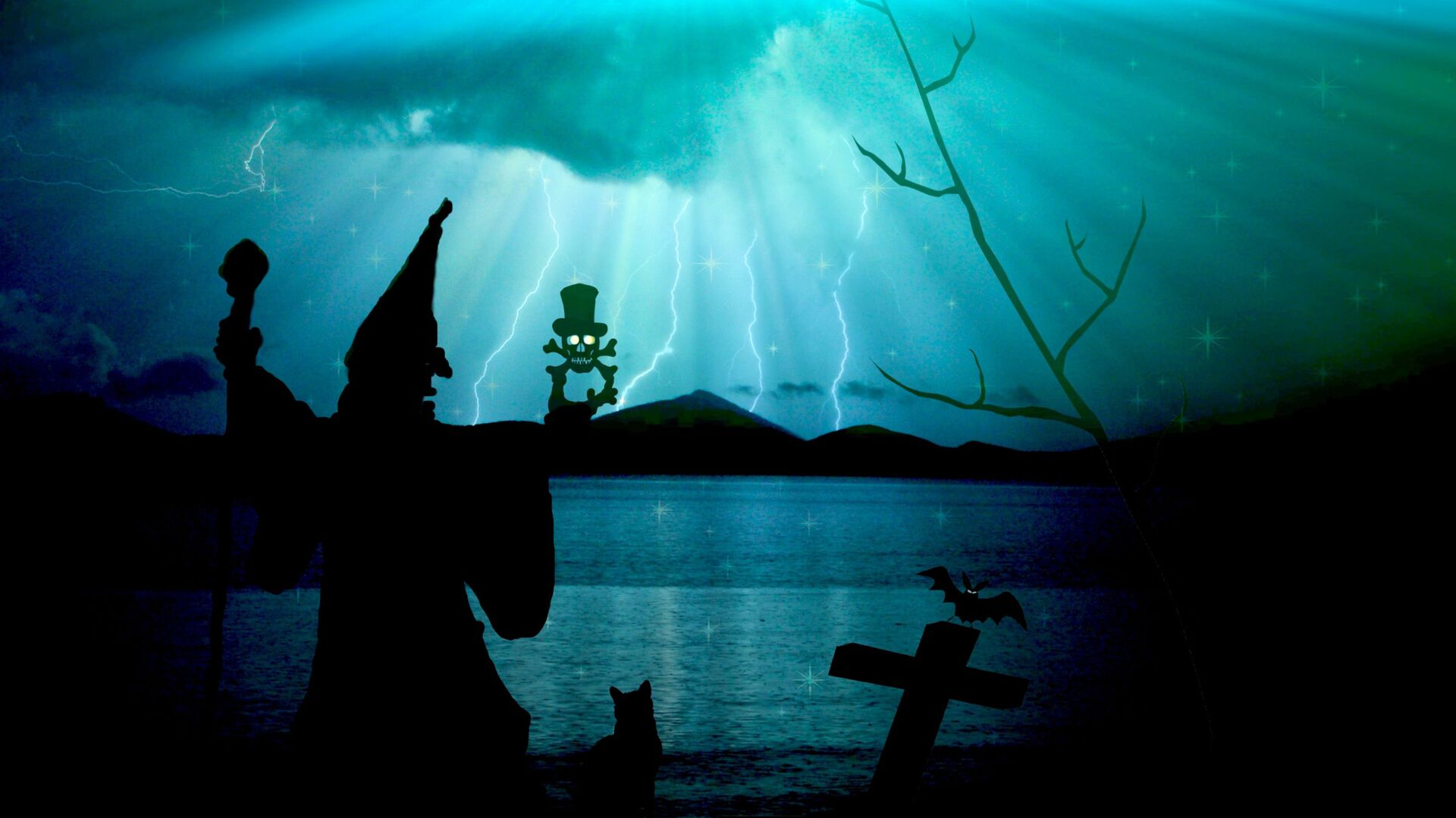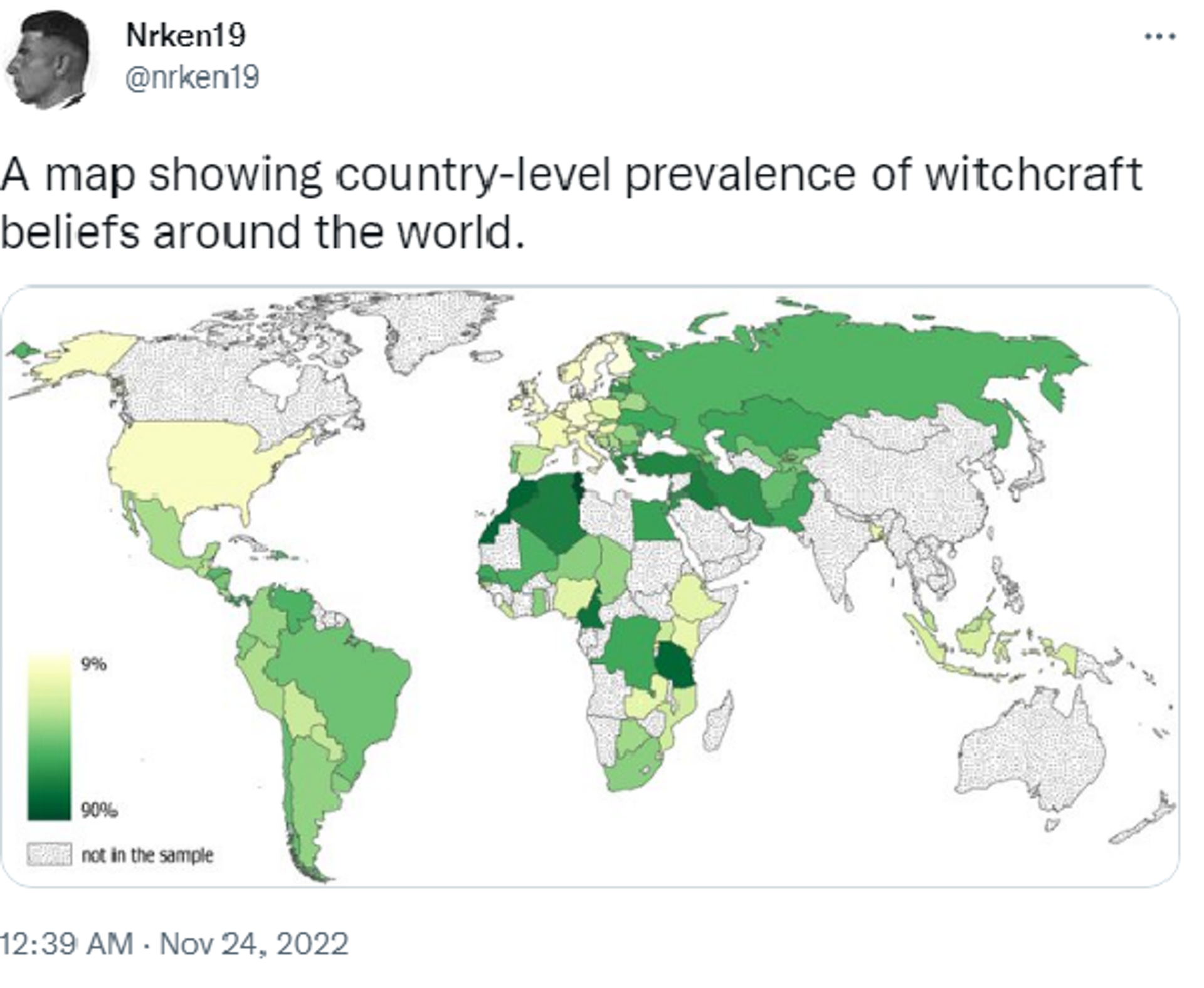https://sputnikglobe.com/20221204/hocus-pocus-frenzy-why-is-belief-in-broom-riding-spell-casting-witches-so-deep-rooted-1105028737.html
'Hocus Pocus' Frenzy: Why is Belief in Broom-Riding, Spell-Casting Witches So Deep-Rooted?
'Hocus Pocus' Frenzy: Why is Belief in Broom-Riding, Spell-Casting Witches So Deep-Rooted?
Sputnik International
Witchcraft beliefs are still widespread around the world, a recent peer-reviewed study revealed.
2022-12-04T13:47+0000
2022-12-04T13:47+0000
2022-12-04T13:47+0000
science & tech
witch
witch hunt
superstition
american university
https://cdn1.img.sputnikglobe.com/img/107776/32/1077763255_0:210:2893:1837_1920x0_80_0_0_b2d9cd95cbf70fd9d7645ca72b076477.jpg
Belief in witchcraft is still immensely widespread around the world, a recent peer-reviewed study revealed. At least one billion people in 95 countries refuse to give up their belief in supernatural, spell casting, bewitchment, and suchlike, with the estimate "most certainly an undercount."Among those surveyed by the study, about 40 percent of the people revealed they still held fast to one or another form of witchcraft beliefs. However, when it came to geographic location, the difference was very keenly felt. Moreover, the prevalence of these beliefs is linked to "cultural, institutional, psychological, and socioeconomic characteristics," the author of the research, Boris Gershman of American University, stated. These beliefs "cut across socio-demographic groups" in each country, the economist added.To explore connections between witchcraft belief and diverse factors, ranging from country, location, religion, social status, and others, Gershman came up with a brand-new dataset. The study used both in-person and telephone surveys by the Pew Research Center and other professional pollsters dating from a period between 2008 and 2017. While the surveys included a broader array of questions, including about respondents' religious affiliations, every one of them queried whether respondents believed in the "evil eye," or that "certain people can cast curses or spells that cause bad things to happen to someone." Gershman clarified that the question, according to him, offered a prevalent definition of witchcraft, allowing to "pinpoint witchcraft believers in the entire merged survey sample."By country, the research showed that in Sweden, for example, no more than 9 percent acknowledged a belief in witchcraft, as compared with 90 percent in Tunisia. Country-wise, witchcraft beliefs were deemed to be explained by "weaker institutions, low levels of social trust, and low innovation, along with conformist culture."More educated people enjoying economic security were less likely to believe in witchcraft, the study found, adding that aspects like level of religiosity or belief in a deity also weighed in heavily. However, the research underscored that very little difference, if any, was rooted in whether the respondents adhered to Christianity or Islam.As interesting as the new dataset is, its surveys failed to include China and India, the world’s most populous nations, with East and Southeast Asia also poorly covered, acknowledged the authors of the research.So, for all the anti-witch frenzy that swept much of Europe during the early modern era, with witch hunts and trials that only died down after the mid-17th century, we can see the lure of the supernatural, often steeped in pagan lore, still holds its own.
https://sputnikglobe.com/20221028/33-people-arrested-for-killing-woman-over-witchcraft-in-indias-odisha-1102797848.html
https://sputnikglobe.com/20211101/back-to-1692-the-last-charged-salem-witch-to-be-exonerated-from-300-year-old-trials-1090376993.html
Sputnik International
feedback@sputniknews.com
+74956456601
MIA „Rossiya Segodnya“
2022
News
en_EN
Sputnik International
feedback@sputniknews.com
+74956456601
MIA „Rossiya Segodnya“
Sputnik International
feedback@sputniknews.com
+74956456601
MIA „Rossiya Segodnya“
witchcraft beliefs are still widespread around the world, peer-reviewed study revealed beliefs are linked with cultural, institutional, psychological, and socioeconomic characteristics
witchcraft beliefs are still widespread around the world, peer-reviewed study revealed beliefs are linked with cultural, institutional, psychological, and socioeconomic characteristics
'Hocus Pocus' Frenzy: Why is Belief in Broom-Riding, Spell-Casting Witches So Deep-Rooted?
The belief in witchcraft, or, in other words, the ability of some people to channel their “supernatural powers” to cast magic “spells,” bewitch others, or use voodoo dolls to wreak havoc is steeped in lore and makes a fascinating subject for analysis, as recent research has proven.
Belief in
witchcraft is still immensely widespread around the world, a recent peer-reviewed
study revealed. At least one billion people in 95 countries refuse to give up their belief in supernatural, spell casting, bewitchment, and suchlike, with the estimate "most certainly an undercount."
Among those surveyed by the study, about 40 percent of the people revealed they still held fast to one or another form of witchcraft beliefs. However, when it came to geographic location, the difference was very keenly felt. Moreover, the prevalence of these beliefs is linked to "cultural, institutional, psychological, and socioeconomic characteristics," the author of the research, Boris Gershman of American University, stated.
These beliefs "cut across socio-demographic groups" in each country, the economist added.

28 October 2022, 15:07 GMT
To explore connections between witchcraft belief and diverse factors, ranging from country, location, religion, social status, and others, Gershman came up with a brand-new dataset. The study used both in-person and telephone surveys by the Pew Research Center and other professional pollsters dating from a period between 2008 and 2017. While the surveys included a broader array of questions, including about respondents' religious affiliations, every one of them queried whether respondents believed in the "evil eye," or that "certain people can cast curses or spells that cause bad things to happen to someone."
Gershman clarified that the question, according to him, offered a prevalent definition of witchcraft, allowing to "pinpoint witchcraft believers in the entire merged survey sample."
By country, the research showed that in Sweden, for example, no more than 9 percent acknowledged a belief in witchcraft, as compared with 90 percent in Tunisia. Country-wise, witchcraft beliefs were deemed to be explained by
"weaker institutions, low levels of social trust, and low innovation, along with conformist culture." More educated people enjoying economic security were less likely to believe in witchcraft, the
study found, adding that aspects like level of religiosity or belief in a deity also weighed in heavily. However, the research underscored that very little difference, if any, was rooted in whether the respondents adhered to Christianity or Islam.
As interesting as the new dataset is, its surveys failed to include China and India, the world’s most populous nations, with East and Southeast Asia also poorly covered, acknowledged the authors of the research.
So, for all the
anti-witch frenzy that swept much of Europe during the early modern era, with witch hunts and trials that only died down after the mid-17th century, we can see the lure of the supernatural, often steeped in pagan lore, still holds its own.

1 November 2021, 02:10 GMT




